You may have read my articles on the interesting procedure of handing over a brand new 60-footer to the owners (parts 1 and 2 here, if not read yet) or my first 500 nautical miles in this yacht transversing the Biscay down south to Porto. Some of your, dearest readers, have asked me about a small detail visible in the pictures: The fenders. No, these are not the standard rubber-bladders we are all familiar with, these are lightweight, in-/deflatable fenders by a French company called Certec. Since there was some interest, I thought it justifies a standalone article, so here we are.
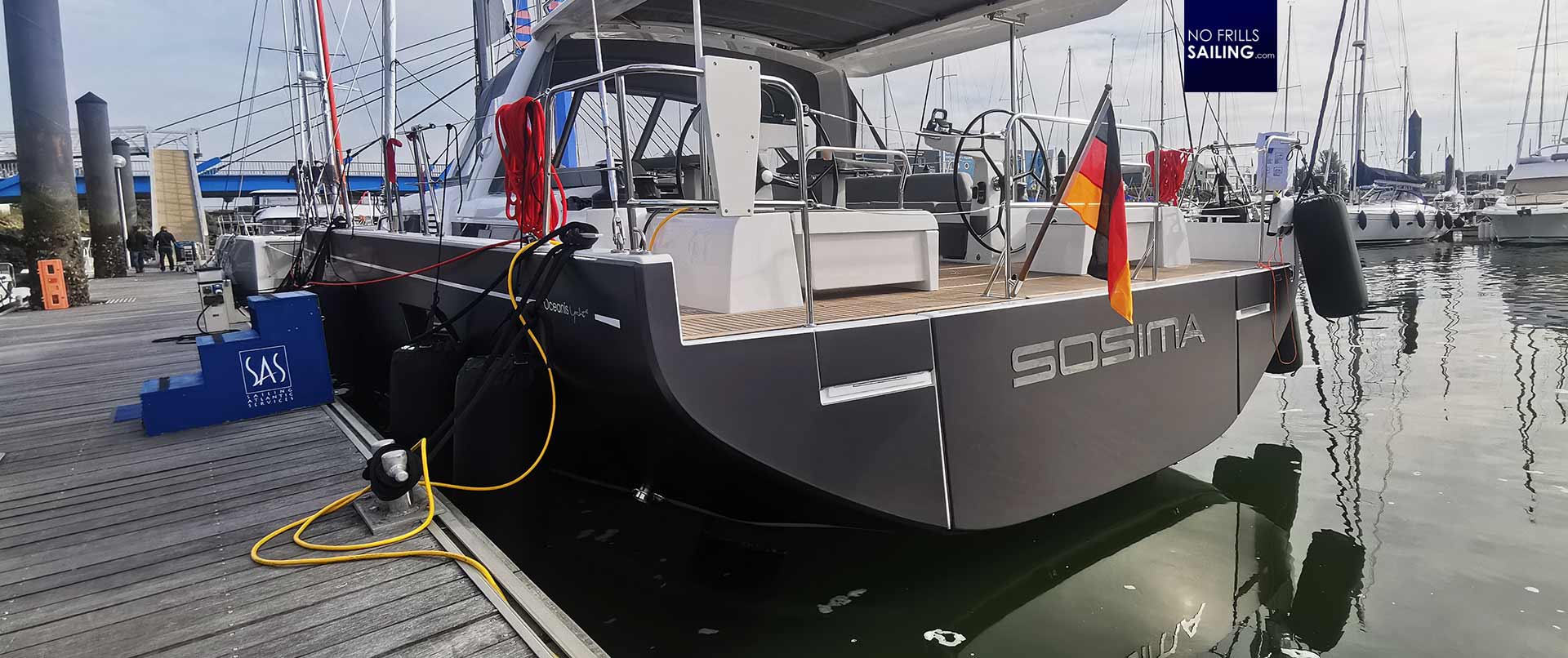
Fenders are a very essential part of your ship´s equipment. They are the buffers securing your yacht at the pontoon, creating a safe zone of no touch between the hard jetty and the delicate gelcoat surface. Usually, fenders are a bit neglected by owners of boats – being just a basic commodity they often do not pay too close attention to this matter. Not so my client and owner of SOSIMA, who right at the start of our conversations and possible signature on the purchasing contract insisted of not taking the shipyard´s option from the price list but to choose his own products: Thanks to him, I now know about Certec and their products.

I as well did not chose to take the shipyard´s option when I bought GEKKO right away: I also invested to buy from a separate source the solid box type fenders for my First 27 / Seascape 27 right away. And I bought many more than the usual 6 fenders per boat. So did my client and owner – for SOSIMA, a 60 feet Beneteau Oceanis Yacht 60, he acquired no less than ten fenders of different sizes. But let´s start at the very product, what´s so special about Certec?
The idea behind Certec fenders
First of all, there are more brands offering this type of product, but being fans of French sailing products, the owner chose Certec. That´s a company based in Lyon specialized in marine accessories like the said fenders (in all forms and sizes), Man overboard products, waterproof bags and such. They are highly specialized in working with all sorts of yachting-products made from technical garments. Their lead product are the fenders. Most noticeable feature of those: They are lightweight and inflatable.
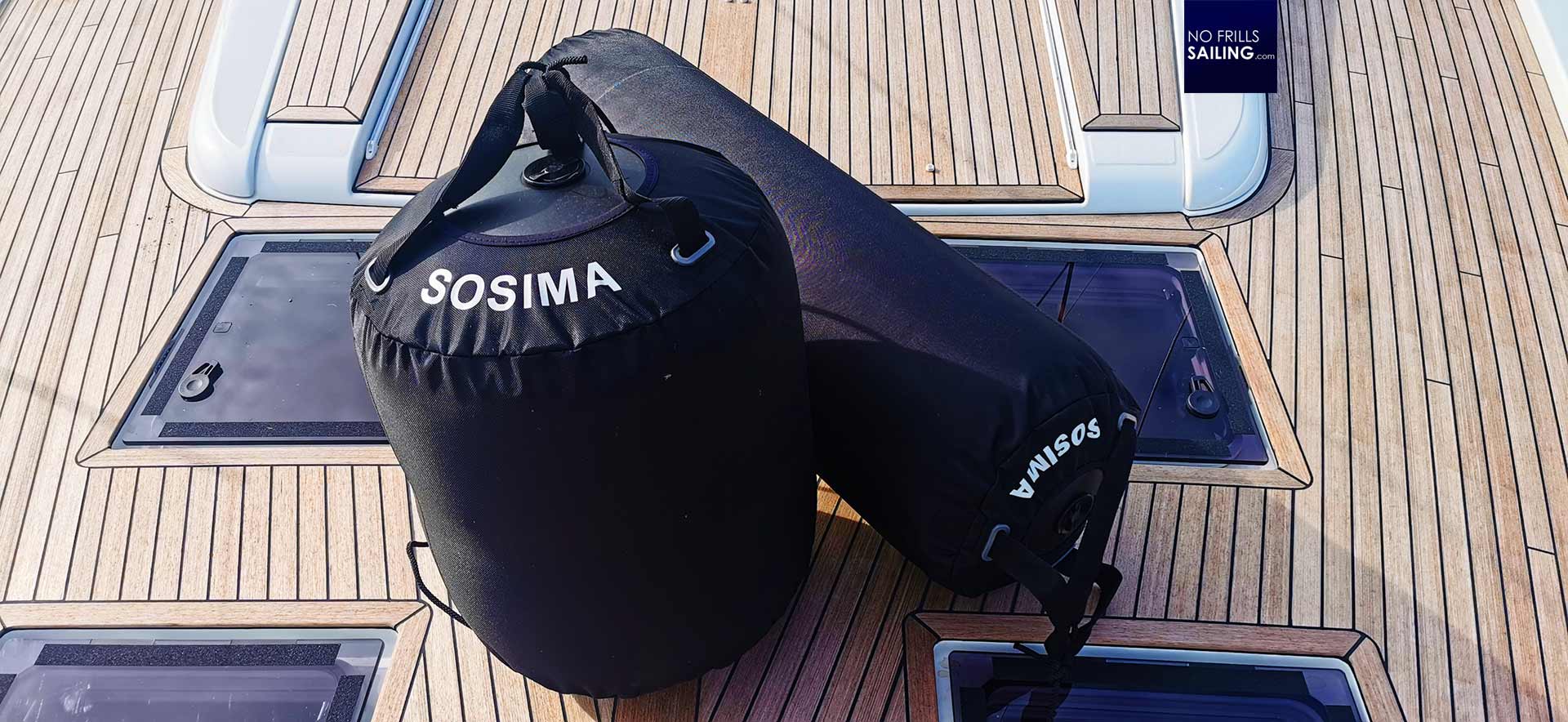
Arriving at dockside and seeing SOSIMA for the first time with my own eyes, I as well notice the fenders. These are bigger than standard – but not oversized – and come with custom boat name branded fender covers. Is this just another rich guy´s knickknack boat overload or really some helpful and useful upgrade? At first, I must admit, I am a bit ambivalent – the fenders included in the standard anchor-pack ex shipyard for anchor, chain and 6 fenders is 3.400 Euros. My owner upgraded to Ultra Marine stainless steel anchor and 10 Certec fenders. The budget for the fenders alone went as high as over 4.000 Euros (plus anchor, chain and such). Is it worth it?
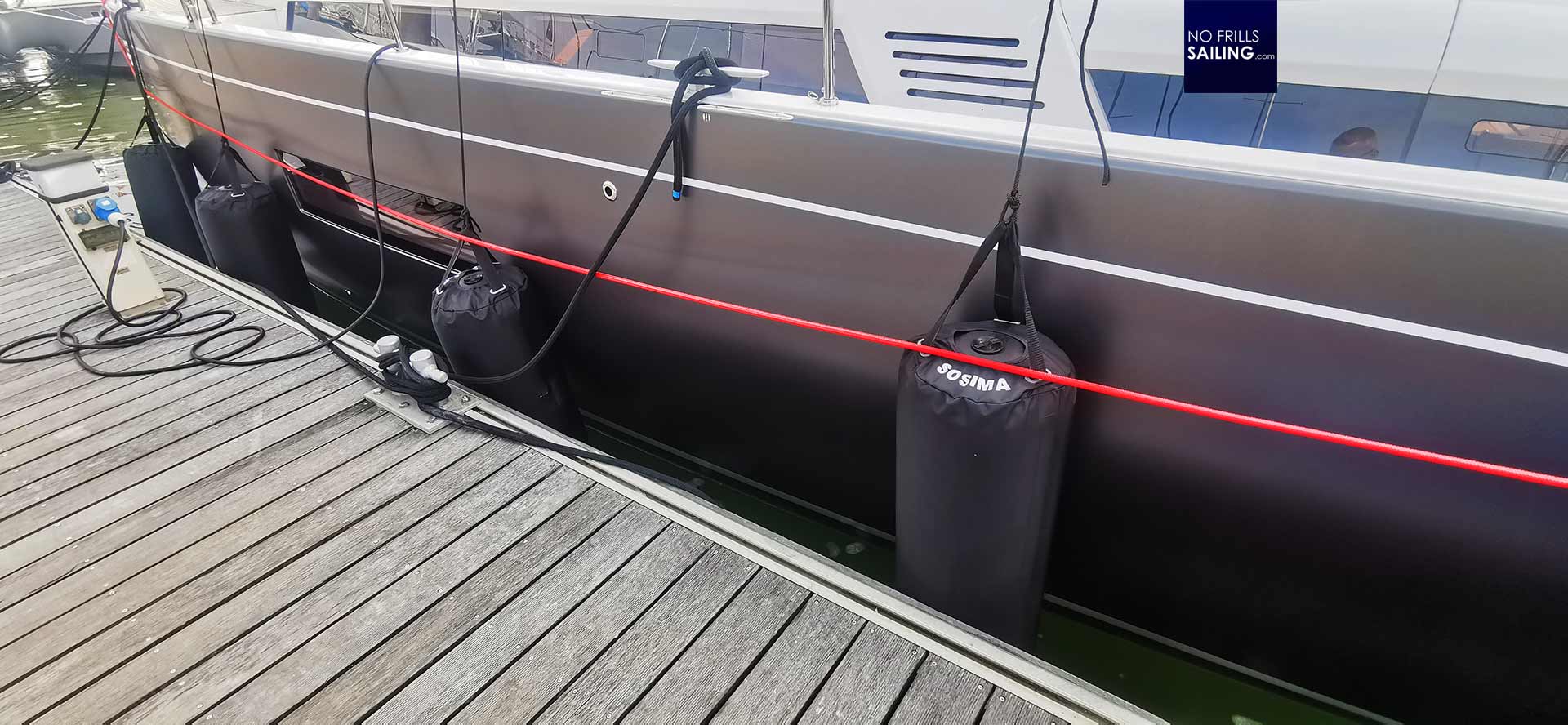
Looking at the Certec fenders I first of all notice their incredible light weight! It is simply amazing! For a boat as big as the Beneteau Oceanis Yacht 60 the standard XL-fender measures 88 x 30 centimeters, which as a “rubber” made fender is quite some weight. My client bought several sizes bigger, most of the 10 fenders measure 150 x 50 centimeters – and the weight of those is barely noticeable. No really, you move them around, lift and walk with those as if they were balloons for a kid´s birthday! And, well, they literally are ballons.
Easy usage: Inflating and deflating the fenders
Certec fenders are inflated via compressor pump, just like ordinary fenders. But the material these are made of is a special PVC-coated lightweight technical garment. The company has specialized in “welding” this material to take on any shape or form desired. Still a relatively small company with less that 20 people employed, they are principal suppliers for many high-usage professional entities, such as the French SAR search and rescue and some IMOCA 60 and other pro racing teams. I´d say that´s a pretty impressive reference. Now, back to the “ballons”. The pressure inside is pretty low, nevertheless, the fenders when fully inflated feel rigid and solid, yet – again – they are so incredibly light weight that even my young kids wouldn´t have any problems in moving these around. That´s always the biggest concern in my opinion when berthing: Especially dock lines (about which I´m going to do an especially dedicated article soon) and the number of fenders are usually a big thing for “secondary” crew members – shortly before berthing they need to be taken out of storage, moved around aboard and fitted to the reeling. Now, with those inflatable lightweight fenders, at least the problem of hauling the heavy rubber fenders is practically solved.
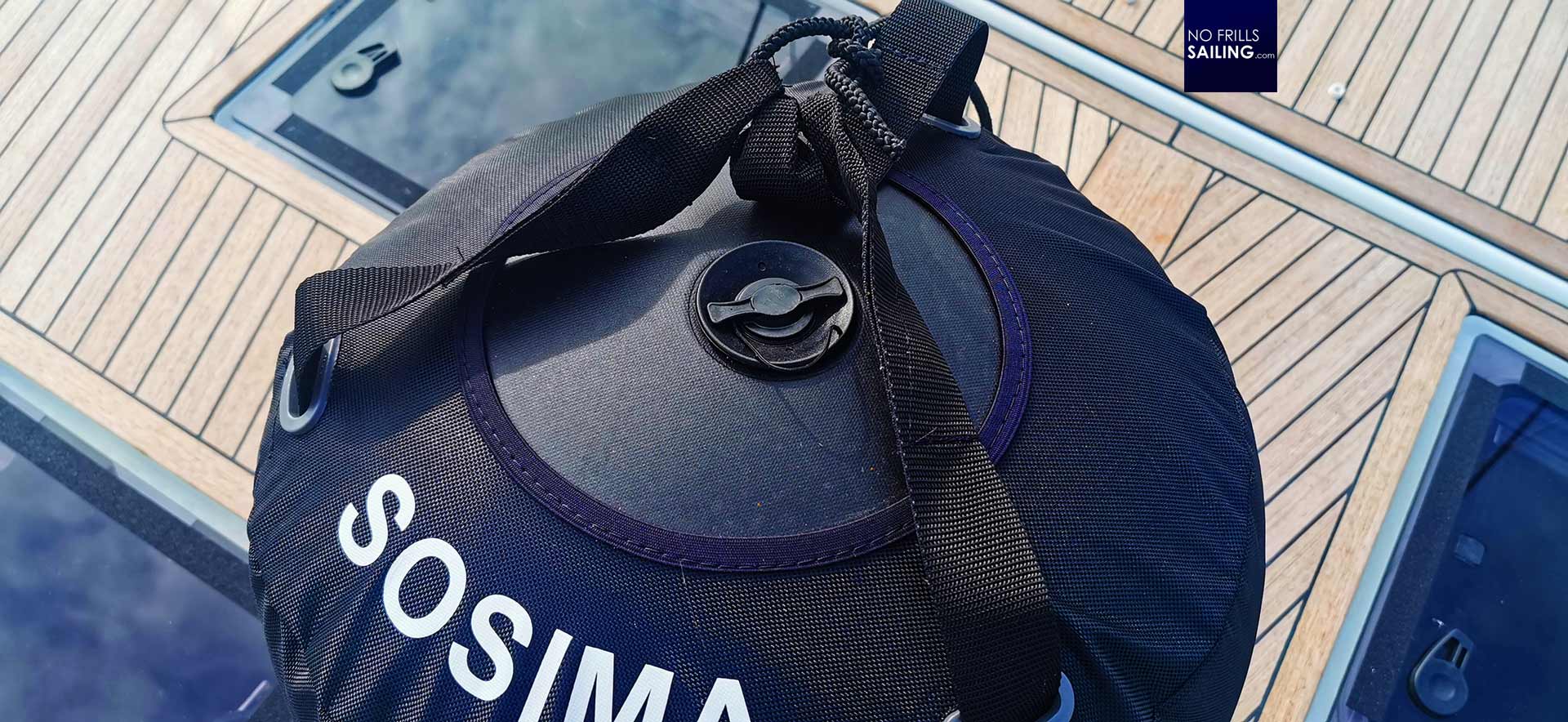
The Certec fender has a valve at the top. It is the same valve type used on most SUP standup paddling boards and as such you might as well have a manual pump at hand anyways. Luckily, as the Beneteau flagship has a dedicated dinghy garage, this yacht is already equipped with an air pressure pumping station in the back of the boat for inflating and deflating the dinghy. The multi-purpose connector accepts different types of pipes, so as well the one needed for filling the fenders. My owner anyway decided to fit a separate air pump (230 V-run) in the sails locker/skipper cabin in the front of the boat where the fenders will be stored when underway. Portable, battery powered compressors will also do.
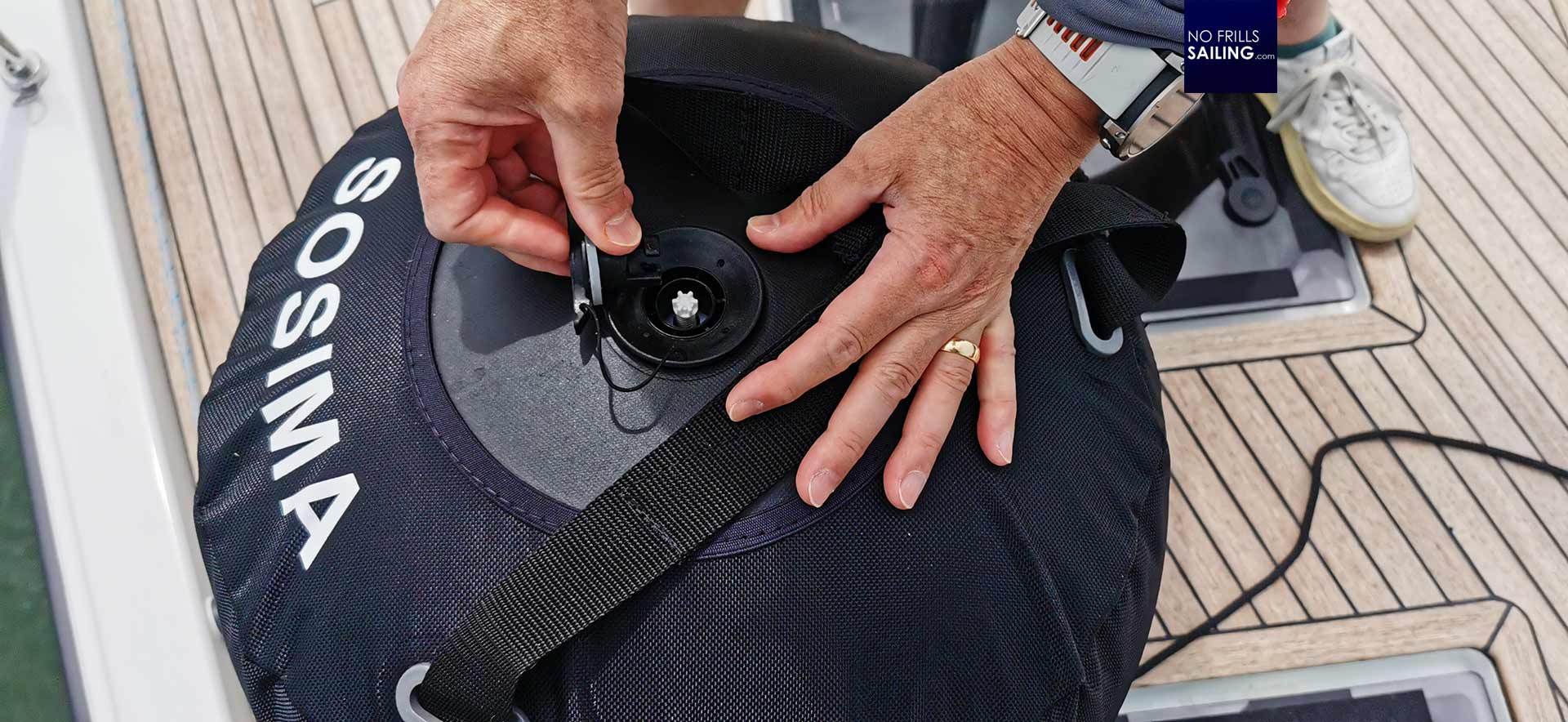
And that´s the true beauty of Certec fenders. You can make them small. Deflating the fenders to minimum-stowage size (for example when crossing the Atlantic Ocean is just a turn and a button. Air will get out and the fender can be folded to 1/50 of its original size. Looking at the large overall volume of the 60´fenders, this is a huge saving of stowage otherwise blocked and wasted by non-deflatable standard fenders. Making the product capable of being inflated and deflated all the time, hence, in the deflated state being squeezed and folded, is the “magic” of Certec and their competence. You have certainly already made the experience with inflatable guest beds at home: They do work a dozen or so times, then, usually, first cracks and fissures will appear, rendering the mattress useless.
Solving the stowage problem of boat fenders
Which brings us to the single biggest concern of boat owners when it comes to fenders: Where to put these damn things?! As much as we appreciate their protection when docked, we kind of love-hate them when underway. Fenders are essentially “rubber covered emptiness of air” – thus blocking and locking away large portions of internal boat volume for storage. Many stowage concepts are around, most of them unpleasant to look at. For example, when we went for the acceptance sail, which only took us under two hours, we just put the fenders to the rear reeling. Practical, but a no-go in terms of the beauty of seamanship.
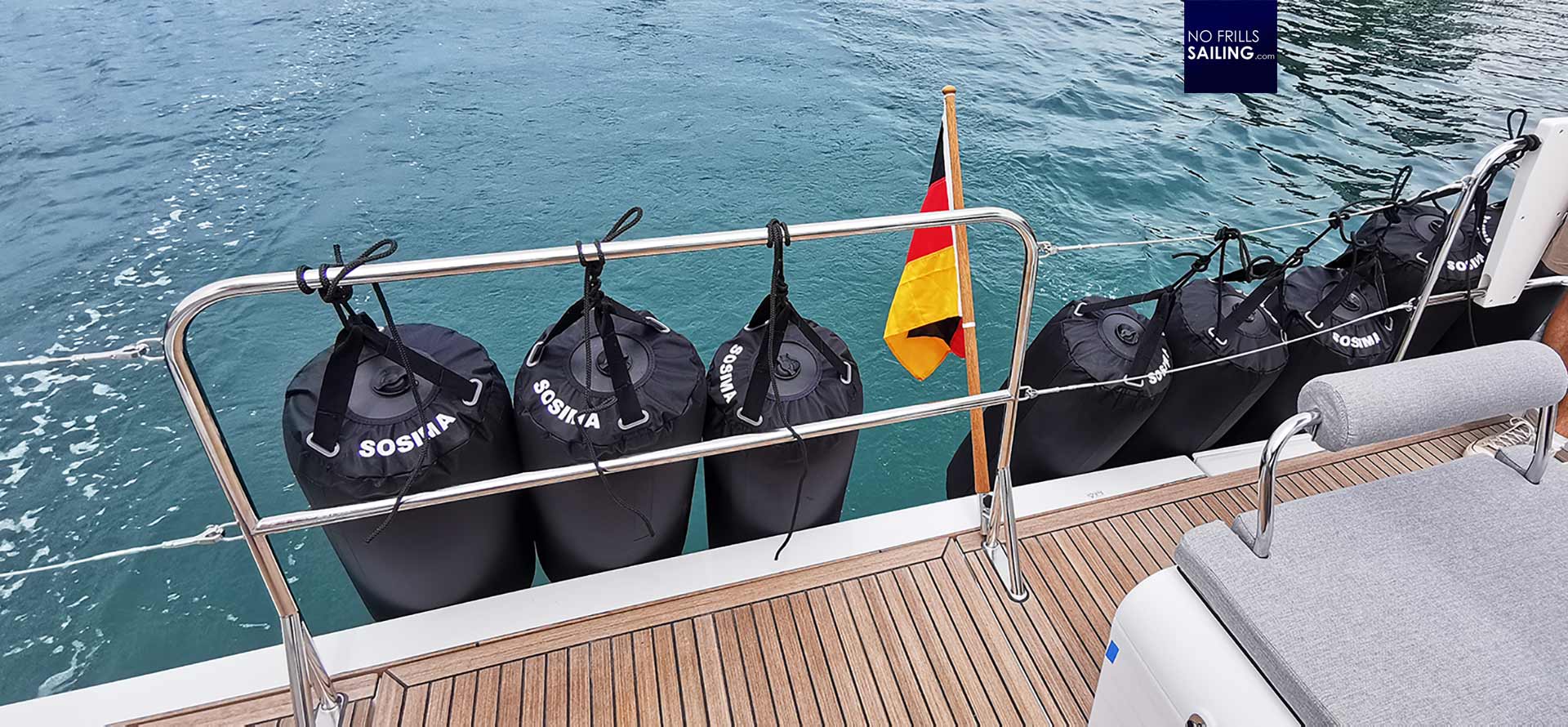
Of course, many modern cruisers, even mid-sized yachts around 40 to 45 feed, offer dedicated lockers with practical bars to throw in the fenders and have their lines neatly prepared for the next berthing. Looking at the picture below, which shows such a fender locker on the Oceanis 46.1, you can see that it is a nice and clean solution but it still blocks a lot of the locker space volume. That´s not so important for weekend- and week-long vocational sailing trips, but again, when it comes to long haul sailing with Ocean crossing, you´d appreciate any free stowage for fresh water, provisions and such.

Deflating a Certec fender will bring down its size to a hundredth of its original size. When stuffed into a dedicated bag, you are going to save a huge amount of internal volume of your boat´s available storage space. Even with SOSIMA, sporting a fantastic sails locker in front of the owner´s cabin (I sadly did not take a picture of this) – it is filled to half when stuffed with the fenders when still inflated. The gain of volume is certainly the biggest asset of these products.
Pricing of Certec fenders
Now, usually cool stuff has its price. And it is indeed the same with Certec fenders. As I mentioned before, the budget for a 60 footer is huge compared to standard offer according to price list. A Certec fender of the size 150 x 50 centimeters costs just over 400 Euros. Fenders for medium sized yachts around 40 feet of 70 x 35 centimeters will end up around 200 Euros each. For my Omega 42 I´d go for 6 fenders in total, summing up to an among of 1.200 Euro for the whole set-up. You may think of protecting the fenders (and your gelcoat) by ordering covers as well? They are included in that price. Nice.
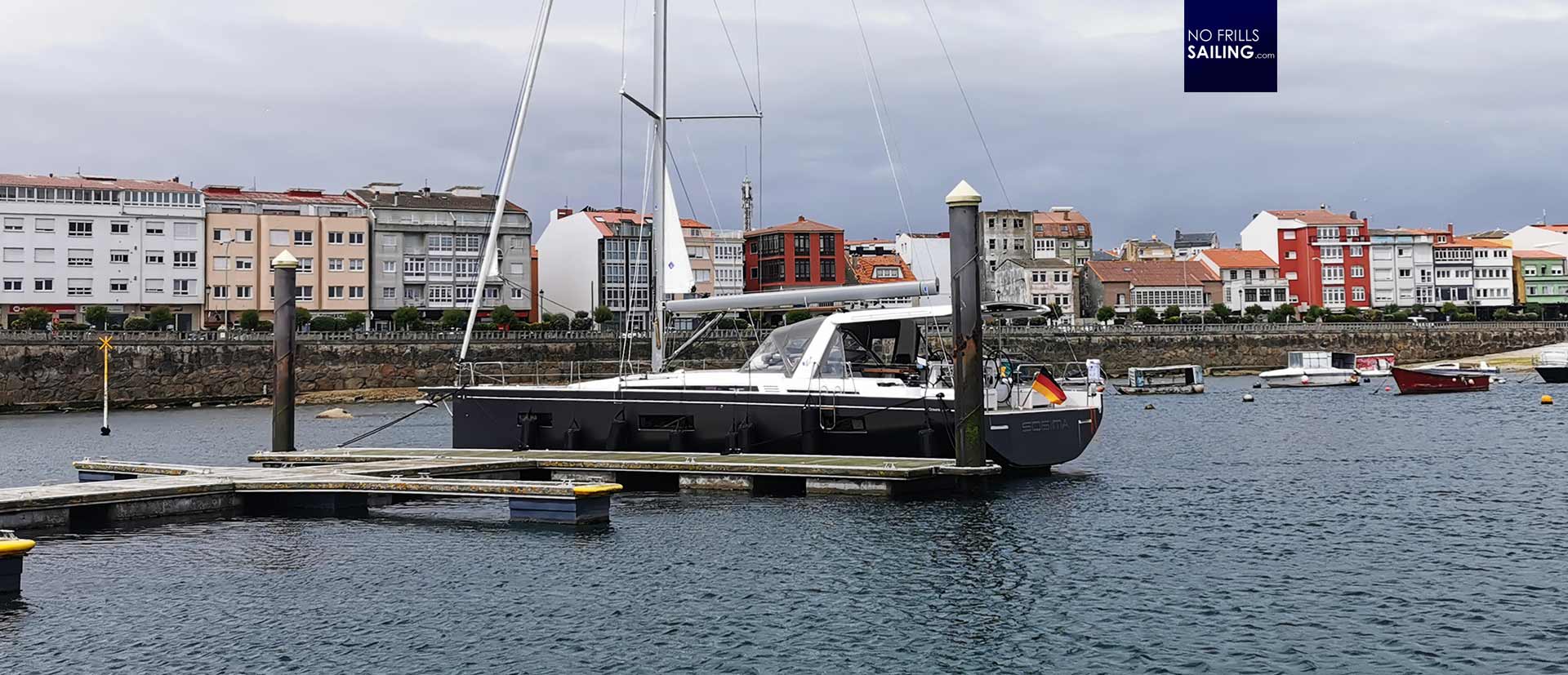
In the end this is a nice little detail and certainly a go-and-get-it suggestion from me. I was skeptical about the real practical value and need for having these, but I had to revisit my prejudice: This is definitely not just some rich guy´s show-off toy but a nicely done high quality product that will certainly enhance your boating experience.
You may also find interesting to read:
Avoiding rope salad whilst sailing
Why every skipper needs a proper (but small & handy) searchlight
Teak deck cleaning: Here´s a really nice product!
